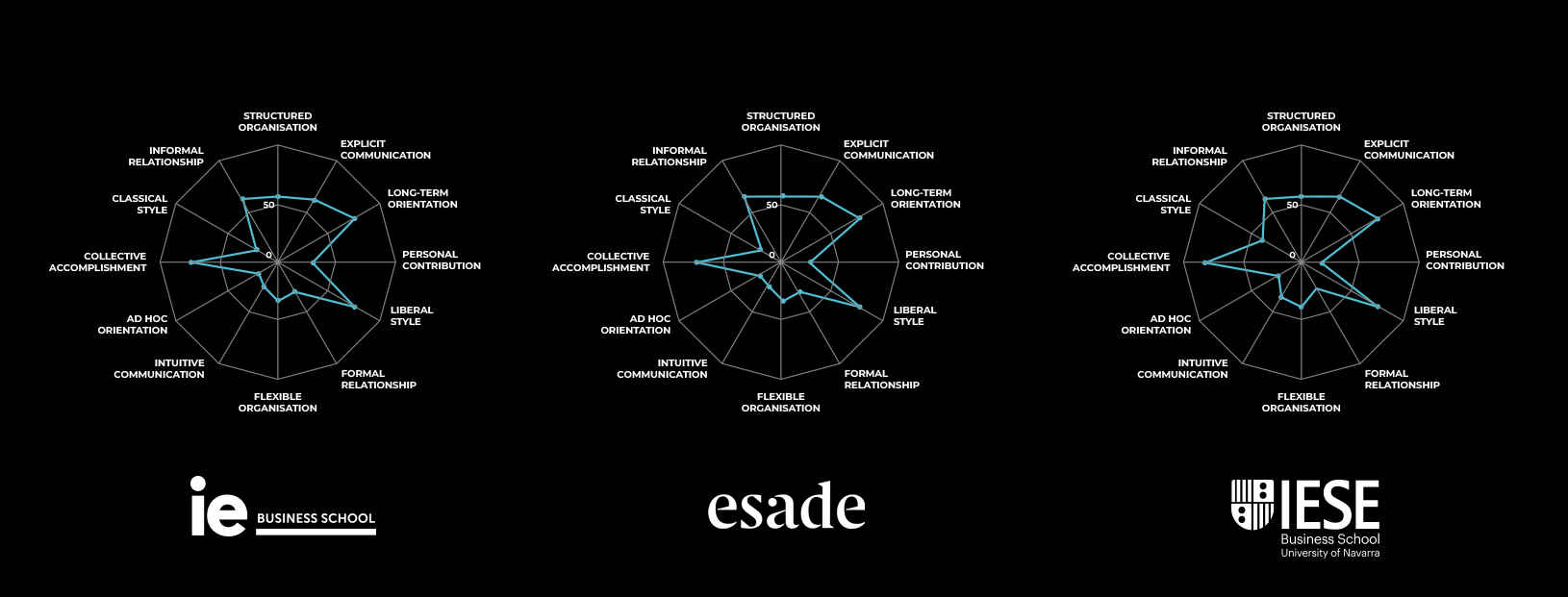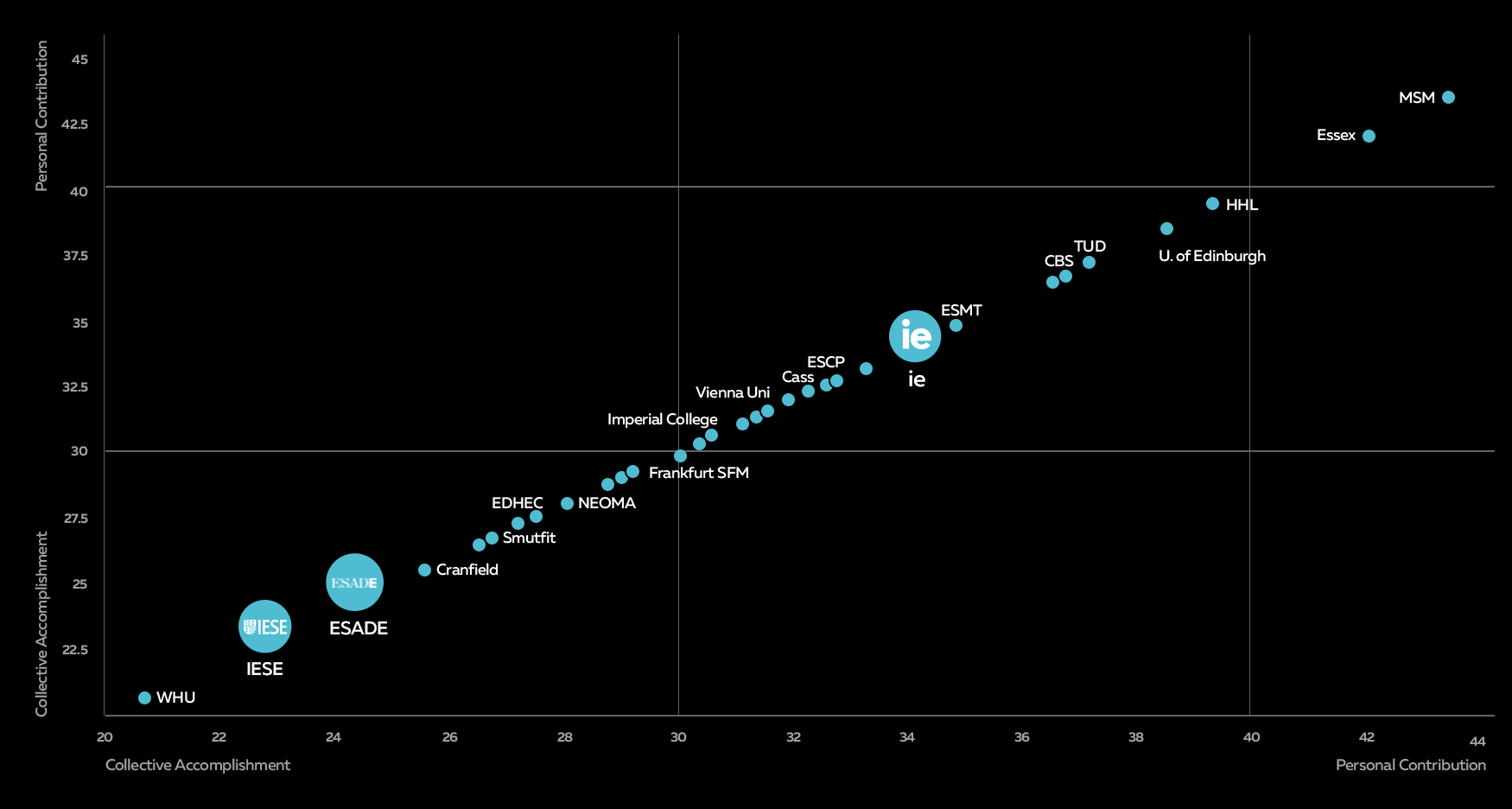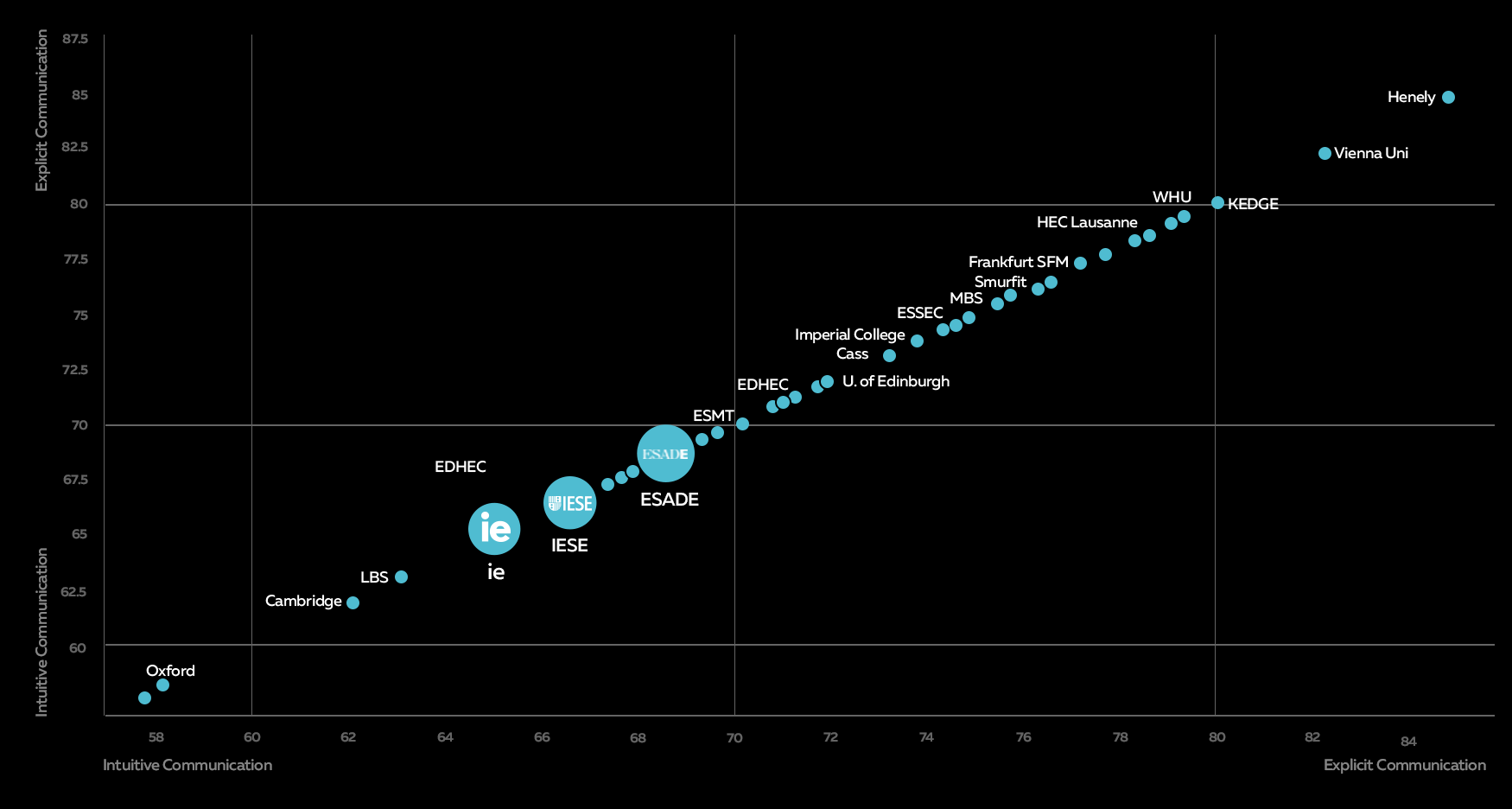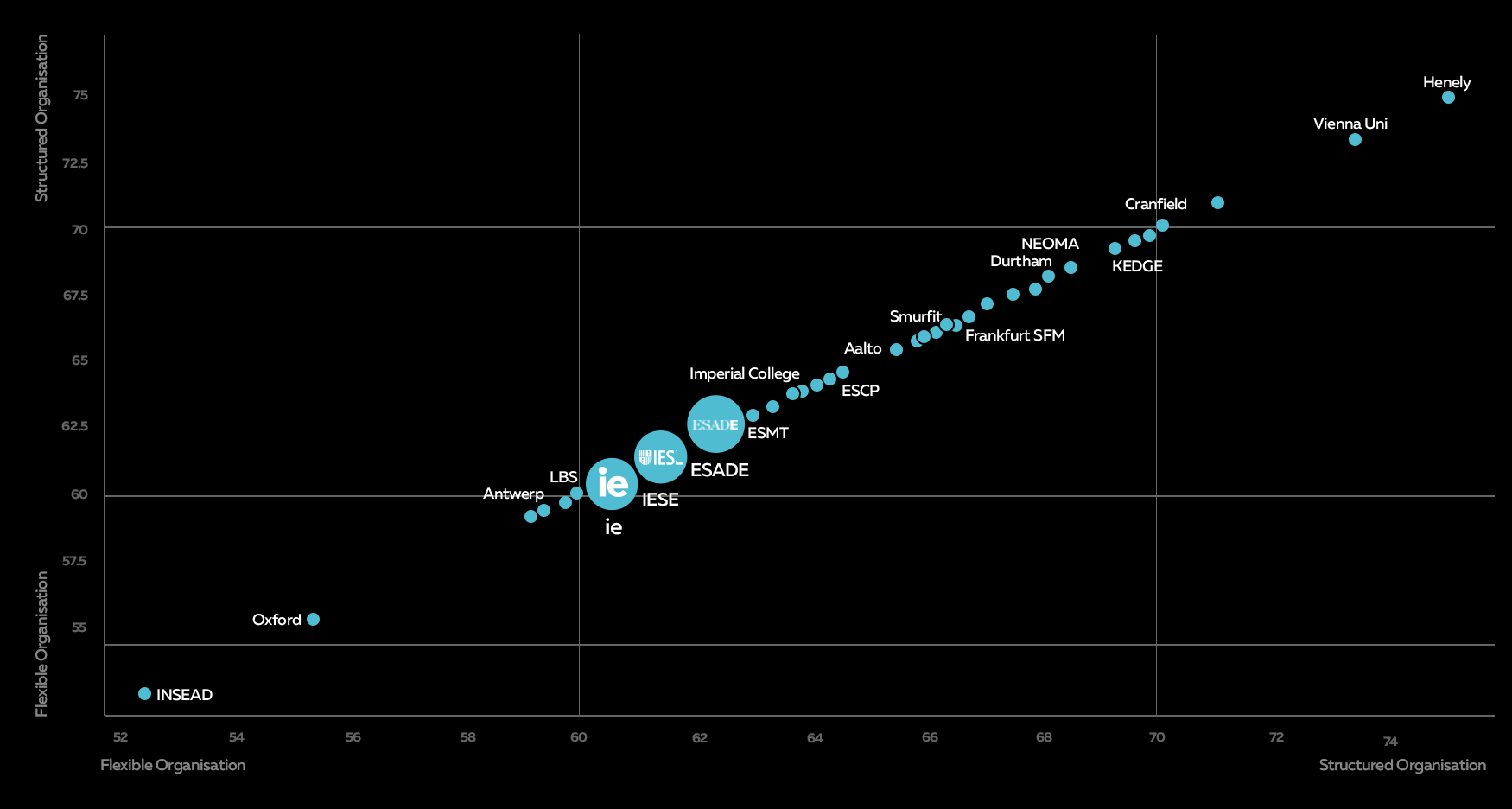
Look at the three graphs below. Although they might look almost identical at first glance, each of them represents the cultural characteristics of three different business schools. If you’re wondering why their shapes look so similar, one possible explanation is this – all three schools are Spanish.

Have you ever asked yourself what it’s like to study in Spain? Everyone has heard of the warm climate and afternoon siesta, but what is the culture like at their schools? And how do Spanish business schools differ? The MBA Cultural Fit tool on Unimy helps you get a better view of the culture in a particular institution.
In this article, we have collected valuable insights from MBA alumni to show you a little bit more of life inside a Spanish business school.
Collaboration is key
Unimy’s MBA Cultural Fit uses six dimensions to map out the culture and values of universities. One of the dimensions is called “personal contribution vs. collective accomplishment”. Looking at the graphs, you will notice that all three score relatively high on collective accomplishment. What does that mean exactly?
Read what Kelly Petterson, who did her Executive MBA at Esade Business School in Spain, shares in a recent webinar:
“I think what the school does as part of bringing [case studies and theory] to life is that it really forces you to work closely in teams. A lot of the classes would divide us up and we would work with other students. […] We would all spend a lot of time in different breakout sessions, working in teams, and then when we went back to our respective countries we would also continue to do that in group work.”
From this insight, you can tell that collaboration must have been at the center of the EMBA program at Esade. While individual tasks and personal achievements are still part of the learning experience, team spirit seems to be a higher priority for these Spanish business schools.
“You’re actually learning how to interact with people from different backgrounds, with different perspectives, and that can be an immense challenge, but also immensely gratifying at the same time. So you’re learning through just behaving with people and spending time with people,” Kelly adds.
In context: Looking at the Spanish schools on Unimy in comparison to other European schools can reveal even more nuance on this scale. For example, both Esade Business School and IESE Business School are among the highest scorers in terms of collective accomplishment in Europe. In comparison, IE Business School leans more towards personal contribution.

How do you measure freedom of expression?
Good collaboration and group work would be impossible without facilitating close relationships and clear communication.
Another dimension on Unimy’s cultural index that can help you gauge the business school environment from afar is “explicit vs. intuitive communication”. It measures the communication preferences within organizational practices. To what extent is communication precise and clearly expressed? If greatly so, then this is a business school that embraces explicit communication.
In practice, this means that students and professors discuss study cases and professional topics freely and in-depth. They don’t have to rely on guessing and personal interpretation to figure out what the discussion is about or what the task means.
This insight from Jaime Ortega Diego from Carlos III University in Madrid might give you a better idea of the communication typical for his class:
“It’s an environment in which students feel comfortable to share ideas, to ask questions. That enhances the learning,” explains Jaime, who is an associate professor of management at the university, and adds: “Often in a workplace environment, there are certain corporate cultures where asking certain questions, you might think: ‘What are the consequences if I ask this question?’ […] and I think in the MBA environment people are encouraged to express their ideas. There is no penalty for expressing ideas.”
In context: While the explicit communication scores of Spanish schools are high, looking at the graph that compares all European universities puts things in perspective. Here you can see that most institutions in Europe have an even higher score on this scale than the Spain-based Esade, IESE, and IE.

What does flexibility mean to you?
For some, freedom of expression is paramount, but for others, the freedom to tailor your own learning experience is even more important.
Valentina Orozco, who completed her International MBA at IE Business School, recently talked about this topic while describing her final MBA project:
“You’re very free, you can solve whatever you want. IE gives you the tools to enable you to map out your scope, your resources, your deliverables […], but then you choose whatever you want.”
From Valentina’s testimony, you get the impression that, at IE, the students and faculty value spontaneity more than rigid order and guidelines. You can adapt to the situation and choose your way with fewer rules and procedures.
In Unimy’s Cultural Fit Map, this characteristic is called “structured vs. flexible organization”. However, the Cultural Fit results of Spanish institutions such as IE, Esade, and IESE show that they place more emphasis on structured organization. How do these scores fit with Valentina’s personal experience during her MBA? Let’s see if the bigger picture can give a more in-depth explanation.
In context: Here is a closer look at how Spanish schools score on this dimension compared to schools elsewhere in Europe. You can see that almost all European universities lean towards having a more structured type of organization. When you zoom in on Spain, you will notice that IE, Esade, and IESE are at the bottom of the graph – and therefore, much closer to a flexible organizational type.

You see now how many curiosities and insights you can discover about business schools by just going one step further in your research. Interested in finding out more about your own cultural preferences? Complete the Cultural Fit Test free of charge and in just 5 minutes.
Comments